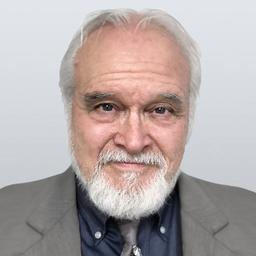The film opens with the backdrop of an enormous American flag. Slowly, a general of the Army walks into view. An offscreen voice calls “Ten-hut” as the general snaps to salute. We see close-ups of the general’s ribbons, medals, and pistols while we hear “To the Colors,” a military bugle call honoring the flag.
Of course, this is “Patton,” the 1970 Oscar-winning movie about General George S. Patton, portrayed on screen by George C. Scott. After this opening you will hear Patton’s actual speech to the troops, given verbatim by Scott. Only then does a background musical score emerge under the credits.
What It’s All About
Or have we? Composer Jerry Goldsmith, who scored “Patton” and dozens of other major films throughout a career spanning four decades, was adept at something few colleagues were: knowing what a film is about. That may seem patently obvious, but it’s not. “Patton” could be interpreted to be about many things: the horror of battle, the liberation of Europe, the politics of war, or the making of an American general. But it’s not about any of those things, and it’s not even about Patton’s life.The meaning of “Patton” is in those opening minutes, where viewers see a man, a flag, and a musical call to honor the flag. The story of “Patton” is the devotion of one man to his country and the form it takes. This is evident from the very start, when the American flag dwarfs the highly decorated man and all we hear is a bugle sounding the notes of a major chord. Those notes (“To the Colors”) are the opening music. It is “diegetic” music—music heard by the characters in a scene, as opposed to “background” music heard only by the movie’s audience—but it nonetheless sets a frame for the ensuing background score.

What Goldsmith does with it is pure gold, indeed.
Immediately after Patton’s speech, we hear a trumpet playing three notes of the bugle call repeatedly, fading out each time. Goldsmith used a device called an echoplex to get that effect. Over the fading echoes an organ intones a thickly harmonized hymn-like melody. The two ideas intertwine, and at length comes a march tune—not a heavy-footed march of cliched war-movie music, but a light, fast, Sousa-like march that eventually bursts into a second strain of more aggressive, yet still joyous measure. Near the end of the title music, the hymn and the march combine, with the echoing trumpets still reminding us of the opening bugle call. The themes of the title music will develop throughout the movie.
Hear it, Don’t Notice It
This is the true role of music in movies: To be indistinguishable from the texture of the film itself, and yet indispensable. Remove Goldsmith’s music from “Patton” and the film would be a different, vastly inferior cinematic experience. Similar things can be said about all movies with great scores.Goldsmith (1929–2004) started out as a composer for TV in the early glory days of the little screen, the 1950s. Music for various series including “Dr. Kildare” and “Gunsmoke” earned him the attention of movie directors. He made a sudden big-screen debut in 1962 with music for a raft of films, the best-known being “Freud,” a bioflick of Sigmund Freud directed by John Huston. It garnered him the first of 18 Academy Award nominations, though he would win for only one, for “The Omen” (1976).
Goldsmith’s reputation grew with films as diverse as “Seven Days in May” (1964), “A Patch of Blue” (1965) and “The Sand Pebbles” (1966), but nothing in those scores prepared studios or listeners for his radically right music to 1968’s “Planet of the Apes.”
“Planet of the Apes” finds a group of humans stranded in a world populated by intelligent apes, a life form foreign to them yet strangely familiar. To underline the alien nature of the ape population, Goldsmith wrote music that frustrates a listener’s usual expectations. The music goes one way but ends at a different place. The musical technique Goldsmith employed to achieve this effect is a form of 12-tone music, a generally dissonant composition method.
Goldsmith also used an echoplex (the device he would use in “Patton”) to loop passages in mesmerizing repetition, and he often set two contrary rhythms off against each other. In short, Goldsmith’s score put the audience in a musical place analogous to the strangely terrifying situation of the characters.

Goldsmith’s mastery of creating music to fit a film’s theme climaxed in 1974, when producer Robert Evans came to him with a plea. A major Paramount release was bombing in audience previews and Evans thought he knew why: The music was a pastiche of 1930s big-band music. The composer apparently thought that because the story took place in the 1930s, such an approach was warranted.








